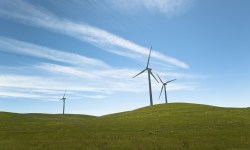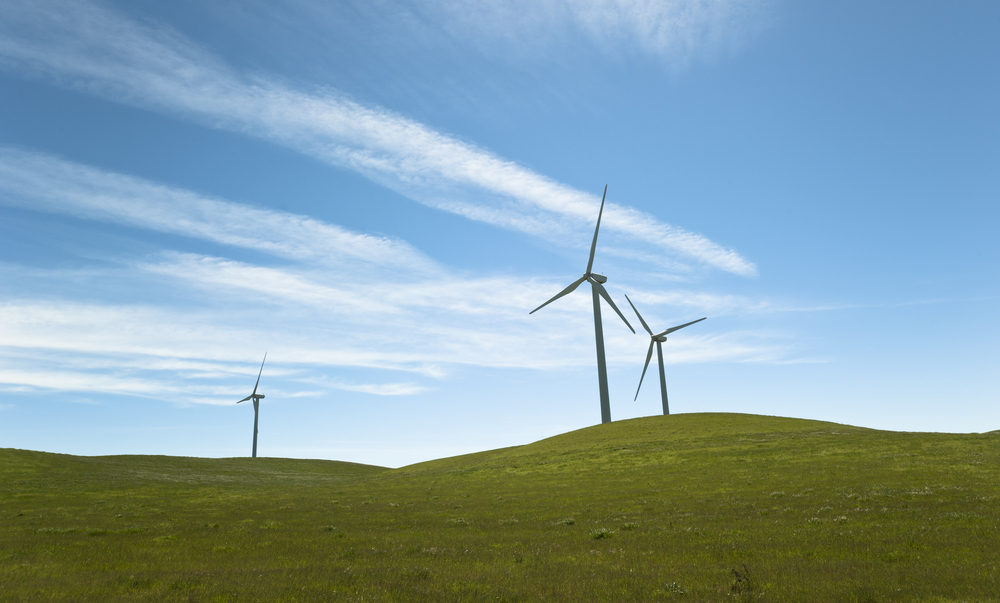
Shutterstock / Tim MessickBlowing away the competition in California.
In 2012, wind energy became the fastest-growing source of new electricity generation in the U.S., providing 42 percent of new generation capacity, according to the American Wind Energy Association.
Wind power is becoming so cheap and so commonplace that it appears poised to help blow up the country’s nuclear power sector, according to a recent Bloomberg article (which you really should read in full). Other highlights from the piece:
- $25 billion was spent on wind energy in the U.S. in 2012.
- The $25 billion outlay increased nationwide wind generating capacity by 13,124 megawatts — up 28 percent from 2011.
- That spending spree was fueled in large part by a mad scramble to qualify for federal tax credits that were set to expire at the end of last year (but were ultimately renewed by Congress).
- Wind-generated electricity met about 3.4 percent of of American demand in 2012, a figure that’s expected to reach 4.2 percent next year.
- $120 billion spent on wind turbines since 2003 has increased wind power supplies 1,000 percent and created as much new electricity generation as could be provided by 14 new nuclear power plants.
In addition to federal tax credits, state-level renewable energy requirements are helping to spur wind’s growth, and the nuclear industry thinks that’s unfair:
Wind power has two advantages. Green energy laws in many states require utilities to buy wind energy under long-term contracts as part of their clean-energy goals and take that power even when they don’t need it. Wind farms also receive a federal tax credit of $22 for every megawatt-hour generated.
Thus, even when there is no demand for the power they produce, operators keep turbines spinning, sending their surplus to the grid because the tax credit assures them a profit. …
Meanwhile, nuclear and coal plants must continue running even as this “negative pricing” dynamic forces them to pay grid operators to take the power they produce.
“It is becoming more pronounced as more wind is coming on,” Christopher Crane, chief executive officer of Chicago-based Exelon Corp. (EXC), said in a phone interview.
If the push to “over-develop” subsidized wind continues, “there is a very high probability that existing safe, reliable nuclear plants will no longer be competitive and will have to be retired early,” according to Crane.
But Exelon, the biggest nuclear-power producer in the country, gets plenty of government help itself. A 2011 report from the Union of Concerned Scientists found that the nuclear power industry wouldn’t even be viable without government support: “more than 30 subsidies have supported every stage of the nuclear fuel cycle, from uranium mining to long-term waste storage.”
And wind turbines don’t generate toxic waste or nuclear meltdowns.



